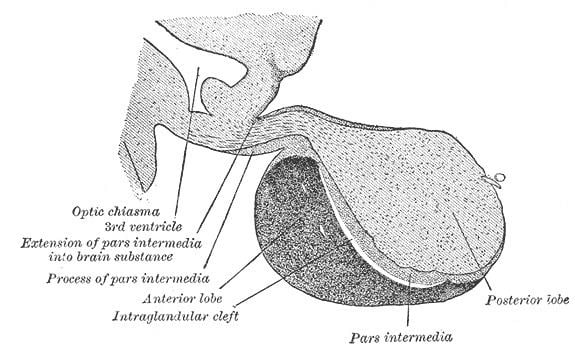Code TH H3.08.02.2.00007 TA A11.1.00.004 | Dorlands/Elsevier p_07/12616939 FMA 74632 | |
 | ||
Latin pars intermedia adenohypophyseos | ||
Pars intermedia is the boundary between the anterior and posterior lobes of the pituitary. It contains three types of cells - basophils, chromophobes, and colloid-filled cysts. The cysts are the remainder of Rathke’s pouch.
In human fetal life, this area produces melanocyte stimulating hormone or MSH which causes the release of melanin pigment in skin melanocytes (pigment cells). However, the pars intermedia is normally either very small or entirely absent in adulthood.
In lower vertebrates (fish, amphibians) MSH from the pars intermedia is responsible for darkening of the skin, often in response to changes in background color. This color change is due to MSH stimulating the dispersion of melanin pigment in dermal (skin) melanophore cells.
References
Pars intermedia Wikipedia(Text) CC BY-SA
